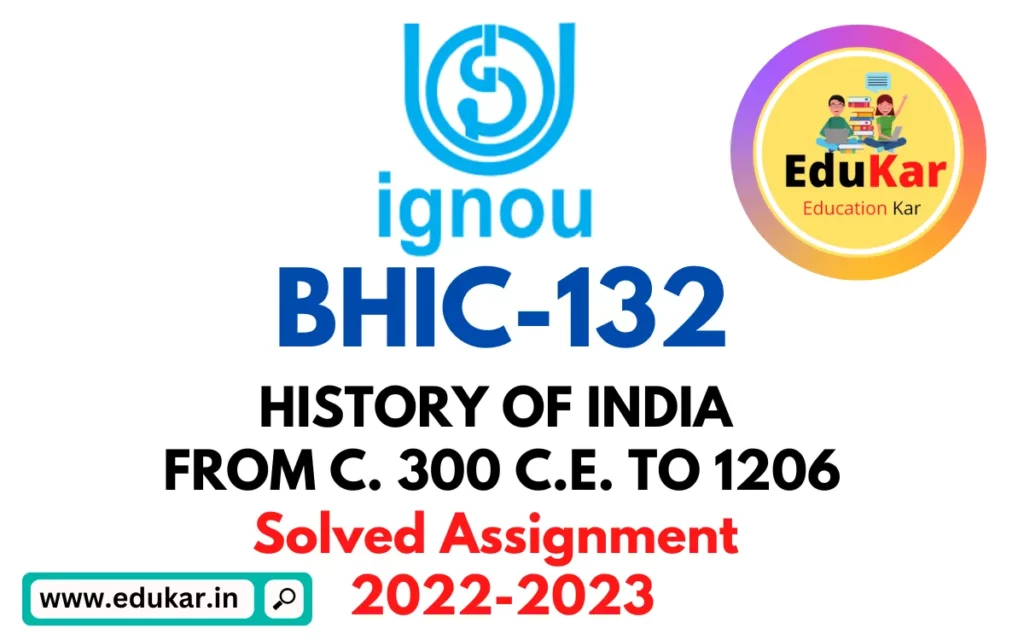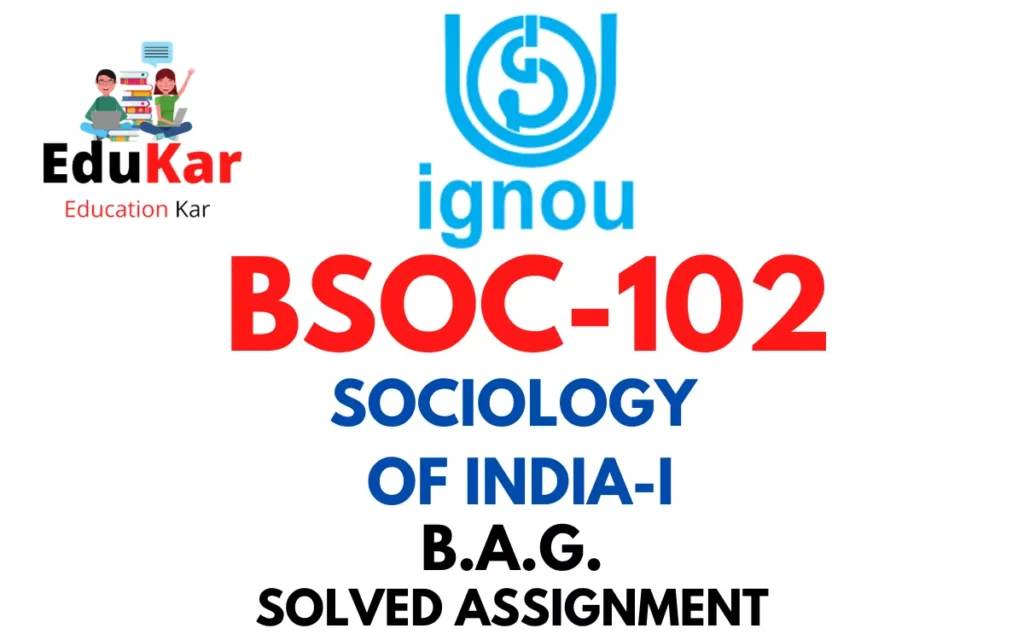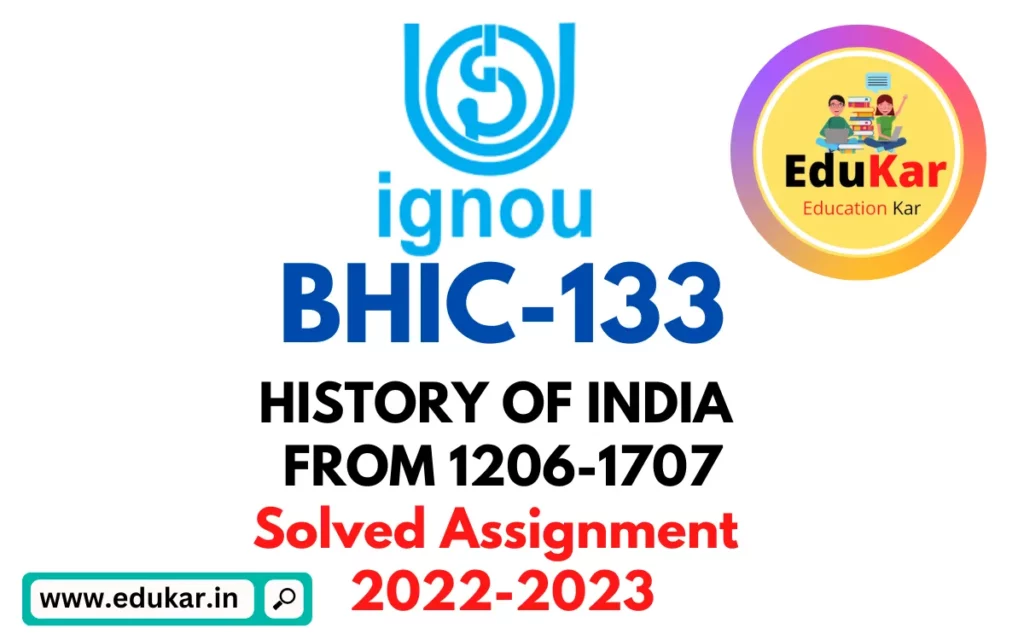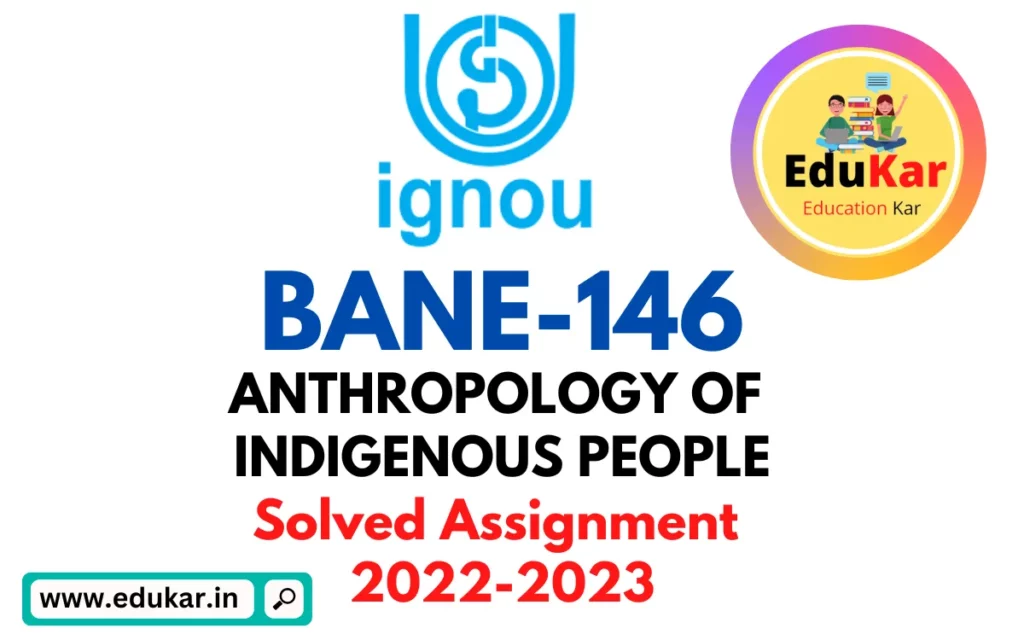Contents
- 1 Assignment – I
- 2 Answer the following in about 500 words each.
- 3 1) Who were the Kushanas? Write a note on the assimilation of foreigners into the Indian mainstream.
- 4 2) Discuss the economic, political and social organization of Tamilakam.
- 5 Assignment – II
- 6 Answer the following questions in about 250 words each.
- 7 3) Write a note on the craft production in North India, explain its organizational nature.
- 8 4) Discribe the salient features of Pallava temple architecture.
- 9 5) What do you understand by the revival of commerce and trade in the early medieval period? Discuss.
- 10 Assignment – III
- 11 Answer the following questions in about 100 words each.
- 12 6) Indo-Greeks
- 13 7) Puranic Hinduism
- 14 8) Prakrit and Pali
- 15 9) Ports
- 16 10) Urban Process
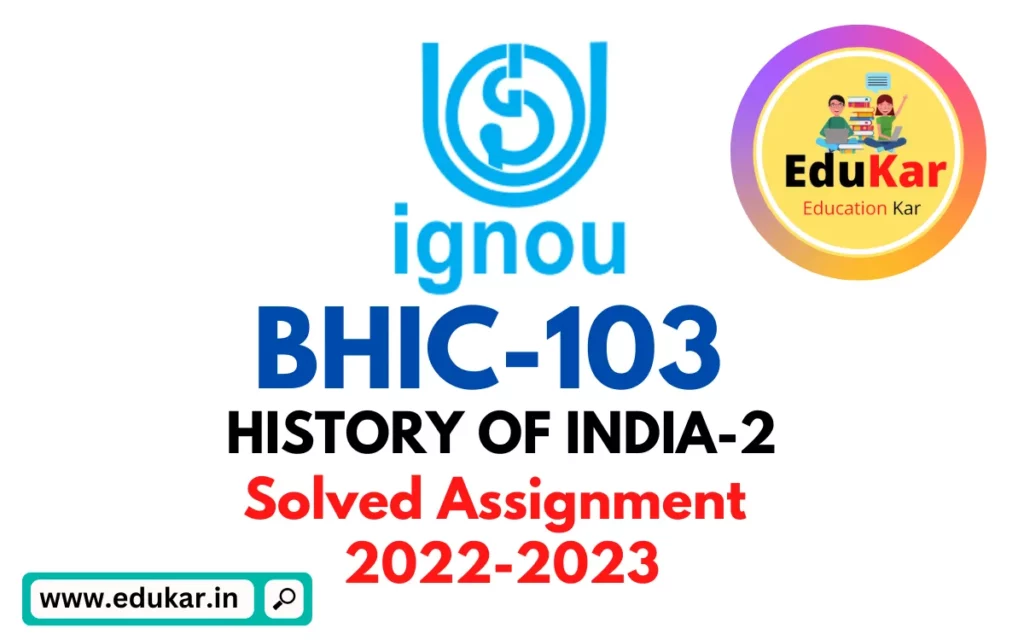
| Title | BHIC-102: IGNOU BAG Solved Assignment 2022-2023 |
| University | IGNOU |
| Degree | Bachelor Degree Programme |
| Course Code | BHIC-103 |
| Course Name | HISTORY OF INDIA-2 |
| Programme Name | Bachelor of Arts (General) |
| Programme Code | BAG |
| Total Marks | 100 |
| Year | 2022-2023 |
| Language | English |
| Assignment Code | BHIC-103/ASST/TMA/2022-23 |
| Last Date for Submission of Assignment: | For June Examination: 31st April For December Examination: 30th September |
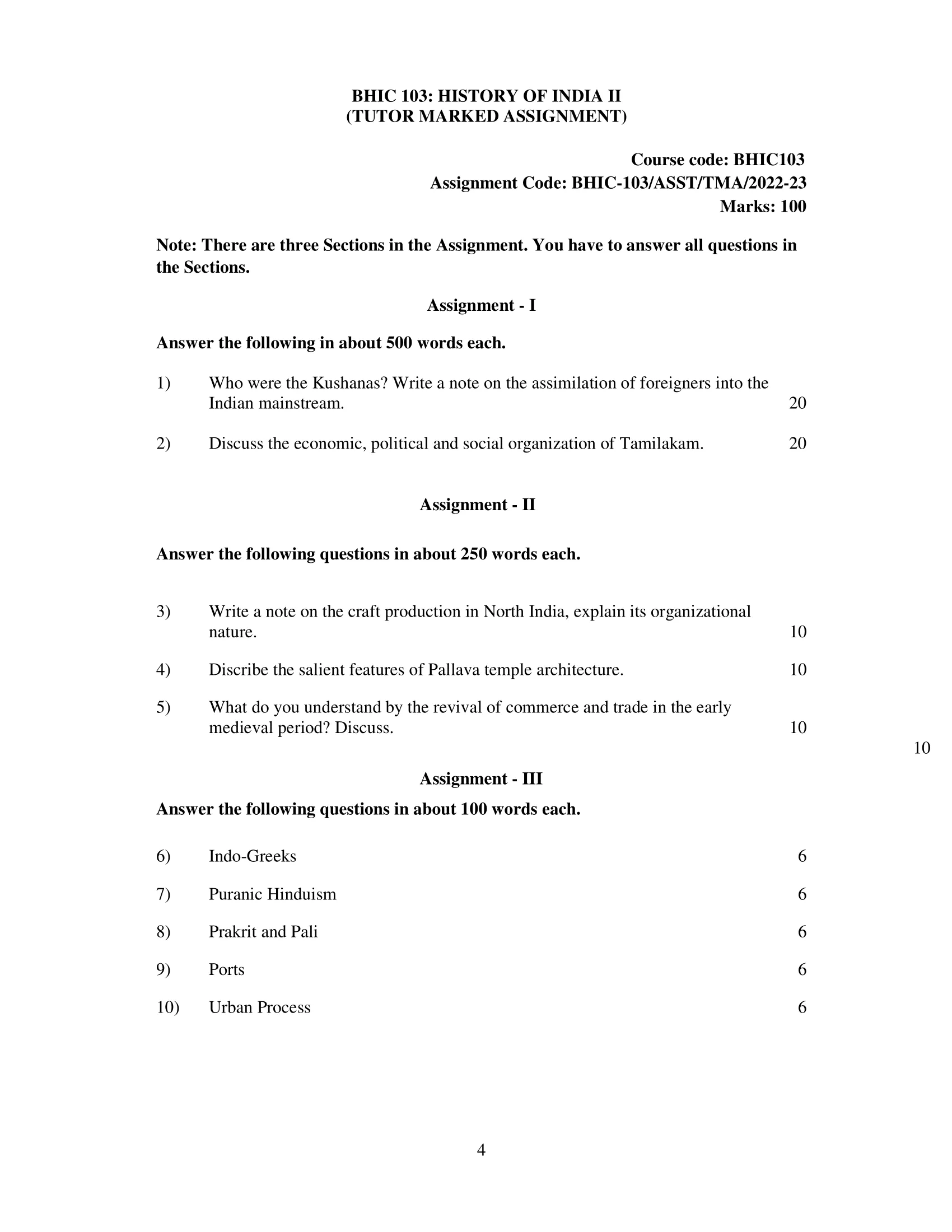
Assignment – I
Answer the following in about 500 words each.
1) Who were the Kushanas? Write a note on the assimilation of foreigners into the Indian mainstream.
Ans: The Kushanas were a Central Asian nomadic tribe that established a powerful empire in northern India and Central Asia from the 1st to the 3rd centuries CE. The Kushana Empire was known for its cultural diversity and tolerance, as it incorporated a number of different ethnic groups into its territories. The Kushanas themselves were originally of Yuezhi origin and were one of several nomadic tribes that migrated into the region after the collapse of the Han Empire in China.
The assimilation of foreigners into the Indian mainstream was a complex process that involved the fusion of different cultural traditions and the creation of new cultural forms. This process was facilitated by the openness and tolerance of the Indian civilization, which had a long history of accommodating and integrating people from different cultural backgrounds. The establishment of the Kushana Empire helped to accelerate this process by providing a context for the integration of different cultural groups and the exchange of ideas and artistic styles.
The Kushanas played an important role in the spread of Buddhism in India and beyond, and they patronized Buddhist institutions and supported the production of Buddhist texts and art. They also adopted elements of Hindu and Persian cultural traditions, which had a profound impact on the development of Indian culture. The fusion of these different cultural influences gave rise to new forms of religious and artistic expression, such as the Gandharan school of art and the Mahayana form of Buddhism.
The assimilation of foreigners into the Indian mainstream also contributed to the growth of trade and commerce, as merchants from different regions brought new goods and ideas to India. The exchange of goods and ideas between India and other parts of the world helped to stimulate economic growth and cultural development.
Ans: Tamilakam was a historical region in southern India that roughly corresponded to present-day Tamil Nadu and parts of southern Kerala. The region was known for its rich cultural heritage and was the birthplace of the Tamil language and the Tamil people. The period from the 3rd century BCE to the 8th century CE marked the early history of Tamilakam and was characterized by a highly developed political, economic and social organization.
Economic organization: Agriculture was the main source of livelihood in Tamilakam and a large portion of the population was engaged in farming. The region was well-endowed with natural resources, including fertile soil and abundant water sources, which facilitated the growth of crops such as paddy, millets, and pulses. Trade was also an important aspect of the economy, and Tamilakam was a major center for the trade of spices, textiles, and other goods. The region had a well-established system of trade routes that connected it with other parts of India and Southeast Asia. The ports of Tamilakam were known for their wealth and prosperity, and they were considered some of the most important trading centers in the ancient world.
Political organization: Tamilakam was ruled by a series of dynasties, including the Cholas, Pandyas, and Cheras. The Cholas were the most prominent of these dynasties and their rule extended over a large portion of southern India, including parts of present-day Andhra Pradesh and Karnataka. The Cholas were known for their military prowess and their empire was considered one of the most powerful in ancient India. The Chola king was the supreme authority in the state and his rule was based on a system of feudalism, with local chieftains and landowners owing allegiance to the king. The administration of the state was well-organized, with a system of tax collection and revenue management.
Social organization: Tamilakam was a highly civilized society, and its people were known for their religious tolerance and cultural diversity. Hinduism was the dominant religion, but other religions such as Buddhism and Jainism were also practiced. The region was known for its rich literary and cultural heritage, and the Tamil language was widely used in poetry, literature, and other forms of artistic expression. The people of Tamilakam were known for their hospitality and the region was considered one of the most welcoming in India. The caste system was prevalent in Tamilakam, but it was not as rigid as in other parts of India.
Assignment – II
Answer the following questions in about 250 words each.
3) Write a note on the craft production in North India, explain its organizational nature.
Ans: Craft production in North India has a long and rich history, with a diverse range of handicrafts being produced in the region for both domestic and international markets. Some of the most famous crafts of North India include textiles, metalware, pottery, woodwork, and jewelry.
The organization of craft production in North India is mainly based on traditional artisanal techniques and is centered around local communities and families. Artisans pass on their skills from generation to generation and the craftsmanship is considered a valuable heritage. The production of crafts is often small-scale and labor-intensive, with artisans working in their homes or in small workshops.
In terms of organization, craft production in North India is primarily informal, with artisans working independently or in loose associations. There is a limited formal sector in certain crafts, but the majority of craft production takes place in the informal sector, with little government intervention or regulation. The informal nature of craft production makes it vulnerable to exploitation, with artisans often facing low wages and poor working conditions.
Despite these challenges, craft production remains an important source of income and employment for many communities in North India. It is also an important part of the region’s cultural heritage and contributes to the diversity of India’s rich handicraft tradition. In recent years, there have been efforts to formalize and modernize craft production in North India, including the establishment of government-supported training and support centers for artisans. These efforts aim to improve the livelihoods of artisans and to ensure the sustainability of traditional craftsmanship in the region.
4) Discribe the salient features of Pallava temple architecture.
Ans: The Pallava dynasty, which ruled over the Tamil Nadu region in southern India from the 4th to 9th centuries CE, was known for its contributions to temple architecture. The Pallava temples are considered some of the most important examples of early South Indian temple architecture and are characterized by several key features.
- Rock-cut Temples: One of the most distinctive features of Pallava temple architecture is the use of rock-cut temples. These temples were carved out of solid rock cliffs and are considered some of the earliest examples of rock-cut architecture in India. The Mahabalipuram group of monuments is a notable example of Pallava rock-cut temples.
- Monolithic Structures: The Pallavas were also known for their monolithic structures, including the iconic Shore Temple at Mahabalipuram, which was carved out of a single rock. This temple is considered one of the earliest examples of South Indian temple architecture and is a testament to the Pallavas’ engineering skills.
- Ornate Sculptural Decoration: Another salient feature of Pallava temple architecture is the intricate sculptural decoration that adorns the walls and columns of the temples. The sculptures depict a range of themes, including scenes from Hindu mythology, animals, and human figures. The sculptures are considered some of the finest examples of ancient Indian art and are known for their realism and attention to detail.
- Complex and Elegant Design: Pallava temples are known for their complex and elegant design, which is characterized by the use of intricate carvings and embellishments. The temples often feature multiple shrines and courtyards, and the use of columns and arches to create a sense of depth and space.
- Use of Vitruvian Principles: Pallava temple architects also applied Vitruvian principles of proportion and symmetry to their designs. This is evident in the well-proportioned structures and the balanced use of elements such as columns, arches, and domes.
5) What do you understand by the revival of commerce and trade in the early medieval period? Discuss.
Ans: The revival of commerce and trade in the early medieval period, which lasted from the 6th to the 12th centuries, marked a significant change in the economic landscape of South Asia. During this time, there was a resurgence of long-distance trade, which led to the growth of towns and cities, the development of new commercial networks, and the expansion of trade beyond the Indian subcontinent.
One of the main factors contributing to the revival of commerce was the growth of the maritime trade networks in the Arabian Sea and the Bay of Bengal. Arab and Persian merchants established new trade routes, connecting the Indian Ocean to the Red Sea and the Persian Gulf, which allowed for the exchange of goods and ideas between South Asia and the Middle East.
The revival of commerce was also facilitated by the growth of regional trade networks, which linked the various kingdoms and principalities of the subcontinent. These networks facilitated the exchange of goods and services within South Asia, and allowed for the development of new commercial centers, such as the city of Kanauj in northern India.
The revival of commerce also had a significant impact on the political and social structures of South Asia. The growth of towns and cities created new economic and political centers, which challenged the authority of local rulers and led to the formation of new states and dynasties. Additionally, the expansion of trade brought new wealth and prosperity to South Asia, which contributed to the development of new cultural and artistic traditions.
Assignment – III
Answer the following questions in about 100 words each.
6) Indo-Greeks
Ans: The Indo-Greeks were a Hellenistic dynasty that ruled over parts of northern India and Afghanistan from the 2nd century BCE to the 1st century CE. They were descendants of the Greek soldiers who were part of the army of Alexander the Great and established themselves as rulers after the death of Alexander. The Indo-Greeks were known for their cultural fusion of Greek and Indian traditions, as evidenced by their coinage, which combined Greek and Indian motifs. They were also known for their support of Buddhism, and some of the earliest Buddhist texts were written in the Greek language during their rule. Despite their cultural achievements, the Indo-Greek kingdom was eventually conquered by the Indo-Scythian and Indo-Parthian dynasties.
7) Puranic Hinduism
Ans: Puranic Hinduism refers to a form of Hinduism that developed during the Puranic period, which lasted from the 3rd to the 10th centuries CE. This period saw the composition of the Puranas, a group of texts that played a significant role in shaping Hinduism as it is known today. The Puranas contain a mix of mythology, cosmology, genealogy, and religious teachings, and are considered some of the most important sources for understanding Hindu beliefs and practices. Puranic Hinduism emphasized devotion to personal deities, such as Vishnu and Shiva, and placed a greater emphasis on the importance of devotion and grace in achieving release from the cycle of rebirth. This form of Hinduism also helped to spread Hinduism beyond its original geographical and cultural boundaries, and played a key role in its development as a major world religion.
8) Prakrit and Pali
Ans: Prakrit and Pali are two ancient Indian languages that were used for religious and literary purposes in ancient India. Prakrit was a group of dialects that was used in ancient India for ordinary speech and was considered a precursor to Sanskrit. Pali, on the other hand, was used as the language of Theravada Buddhism and is considered the classical language of this tradition. Pali is believed to be a form of Middle Indo-Aryan and is closely related to Prakrit. Both Prakrit and Pali were used in the composition of important religious and literary works, such as the Jain scriptures, the Buddhist scriptures, and the plays of Kalidasa. They are important for understanding the cultural, literary, and religious history of ancient India, and continue to be studied by scholars today.
9) Ports
Ans: Ports are coastal locations that serve as harbors for ships and provide access to trade routes and waterways. Ports play a crucial role in international trade and commerce, connecting producers and consumers from different regions of the world. They are centers of economic activity, providing jobs, supporting local businesses, and contributing to the growth of the surrounding region. The development of ports is often tied to the growth of cities and their importance in the global economy. Some of the world’s largest and busiest ports include Rotterdam in the Netherlands, Shanghai in China, and Singapore. The modern-day port is equipped with various facilities and infrastructure to support the movement of goods, including cargo handling equipment, storage facilities, and transportation networks.
10) Urban Process
Ans: Urbanization refers to the growth and development of cities, which is driven by a number of social, economic, and demographic factors. The urban process refers to the set of changes that take place as a result of urbanization, including changes in land use, housing patterns, transportation systems, and the economy. As cities grow, they become centers of economic activity and attract people seeking better job opportunities, leading to further population growth and urban expansion. This process is often accompanied by challenges, such as traffic congestion, environmental degradation, and the need for new infrastructure and services. Urbanization also leads to changes in social and cultural patterns, as people from different backgrounds come together in cities, leading to greater diversity and cultural exchange. Understanding the urban process is important for managing the growth and development of cities in a sustainable and equitable manner.
How to Download BHIC-103 Solved Assignment?
You can download it from the www.edukar.in, they have a big database for all the IGNOU solved assignments.
Is the BHIC-103 Solved Assignment Free?
Yes this is absolutely free to download the solved assignment from www.edukar.in
What is the last submission date for BHIC-103 Solved Assignment?
For June Examination: 31st April, For December Examination: 30th October




